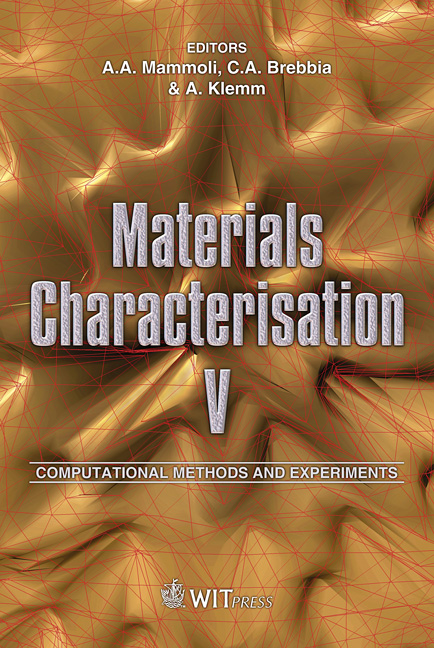Experimental Validation Of A Thermal Model Of Adhesively Bonded Scarf Repairs For CFRP Composite Materials Incorporating Cure Kinetics
Price
Free (open access)
Transaction
Volume
72
Pages
11
Page Range
351 - 361
Published
2011
Size
847 kb
Paper DOI
10.2495/MC110311
Copyright
WIT Press
Author(s)
C. C. N. Bestley, S. G. R. Brown & S. M. Alston
Abstract
Adhesively bonded scarf repairs are the preferred method of repairing modern composite structures as they provide high strength restoration and aerodynamic flushness. Curing of the adhesive bondline is carried out by locally heating the repair area. To assess repair design and heating practices simulation can be used to model both the transient heat transfer during curing and the level of cure likely to be achieved at different regions in the adhesive joint. In this paper a 3D curing model is described to simulate heat transfer through a composite component. The cure kinetics of a commercial epoxy resin adhesive have been determined using isothermal Differential Scanning Calorimetric (DSC) analysis. Using these kinetics the model is able to determine the influence of the exothermic reaction within the adhesive on the overall temperature variation within the component. An experimental programme has been carried out where composite material and bonded repair patches have been cured with thermocouples providing measured temperature/time data during the cycle. The results from the cure model are then validated by comparison with these experimental results. The cure model is capable of being used to optimise the cure cycle for a bonded repair, ensuring the maximum degree of cure of the adhesive with minimum variation of temperature within the bond line. Keywords: cure kinetics, DSC analysis, numerical model. 1 Introduction The increase in use of composites in the aerospace, automotive and civil engineering industries has led to the increasing demand for development of
Keywords
cure kinetics, DSC analysis, numerical model





